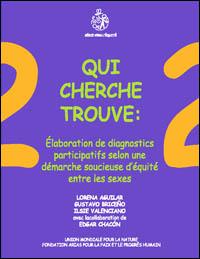

Related content
Lignes directrices sur l’exploitation des espèces menacées
Les sociétés du monde entier exploitent les espèces sauvages, dans une mesure plus ou moins grande, pour l’alimentation, les matériaux de construction, les soins de santé, les médicaments, la lutte contre les parasites, l’ornementation, générer des revenus, les loisirs, ainsi qu’à des fins culturelles et spirituelles. Si cette utilisation des espèces sauvages contribue directement au bien-être de milliards de personnes dans le monde, la surexploitation des espèces sauvages est l’un des principaux facteurs de perte de biodiversité.
Priročnik in orodja za presojo vplivov v kontekstu svetovne dediščine
As the World Heritage Convention celebrates its 50th anniversary in 2022, over 1100 sites around the world are recognized as World Heritage – places that are so valuable to humanity that there conservation has been deemed our collective responsibility. Yet many of these exceptional places face increasing pressure from diverse types of development projects within and around the sites. Assessing the impacts of such projects is essential to both prevent damage to World Heritage and identify sustainable options. This Guidance and toolkit explains the process for achieving these goals. Offering practical tips and tools including checklists and a glossary, it provides a framework for conducting impact assessments for cultural and natural heritage sites.
Guide sur l’évaluation des impacts cumulatifs sur la biodiversité des projets éoliens et solaires et des infrastructures associées
Un objectif clé de ce guide est de recadrer l’EIC pour aider à soutenir la conservation de la nature et la réalisation des objectifs mondiaux en matière de biodiversité (aux côtés des objectifs climatiques et autres objectifs de développement sociétaux). Ce guide est centré sur la biodiversité et le développement éolien et solaire, et s’adresse principalement aux planificateurs gouvernementaux et aux promoteurs de projets. Cependant, étant donné qu’il est conçu pour aider à relever certains des défis existants de l’EIC, sa portée est potentiellement plus vaste.
สำหรับการประเมินผลกระทบด้านต่างๆ
As the World Heritage Convention celebrates its 50th anniversary in 2022, over 1100 sites around the world are recognized as World Heritage – places that are so valuable to humanity that there conservation has been deemed our collective responsibility. Yet many of these exceptional places face increasing pressure from diverse types of development projects within and around the sites. Assessing the impacts of such projects is essential to both prevent damage to World Heritage and identify sustainable options. This Guidance and toolkit explains the process for achieving these goals. Offering practical tips and tools including checklists and a glossary, it provides a framework for conducting impact assessments for cultural and natural heritage sites.
Biodiversity and responsible sourcing for wind and solar developments
The key aim of this report is to outline how developers can start to act on supply chain biodiversity impacts by improving traceability and sourcing practices through. It is primarily aimed at developers of wind and solar projects and transmission infrastructure, who primarily source composite goods (e.g. wind turbines and solar panels).
Réduction des menaces pesant sur les espèces et restauration en République centrafricaine
This report presents findings from an assessment of the biodiversity conservation potential of four project sites: Lobaye, Mambéré-Kadéï, Ombella-Mpoko, and Sangha-Mbaéré located in the Bangui region of the Central African Republic (CAR). This assessment was done using the Species Threat Abatement and Recovery (STAR) metric, which employs high-resolution imagery and an approach to modelling species’ Area of Habitat (AOH) that was revised after June 2020 among other enhancements. This work was undertaken to better inform threat abatement and restoration planning and implementation at the partner project sites, and as part of a wider effort to pilot and strengthen the use of STAR as a tool for restoration and conservation practitioners, communities, investors, and policymakers.
Pokyny a nástroje pro posuzování vlivů v kontextu světového dědictví
As the World Heritage Convention celebrates its 50th anniversary in 2022, over 1100 sites around the world are recognized as World Heritage – places that are so valuable to humanity that there conservation has been deemed our collective responsibility. Yet many of these exceptional places face increasing pressure from diverse types of development projects within and around the sites. Assessing the impacts of such projects is essential to both prevent damage to World Heritage and identify sustainable options. This Guidance and toolkit explains the process for achieving these goals. Offering practical tips and tools including checklists and a glossary, it provides a framework for conducting impact assessments for cultural and natural heritage sites.
Monitoring biodiversity after oil spill remediation in the Niger Delta
The Niger Delta region of Nigeria is facing severe environmental challenges due to widespread oil extraction activities, resulting in recurring oil spills and adverse effects on biodiversity, ecosystem services and livelihoods. This report documents the implementation of protocols of the IUCN Niger Delta Biodiversity Technical Advisory Group (BTAG) on two impacted sites at Adibawa Well 8 S/L wellhead in Joinkrama, Rivers State, and Adibawa North-East 1 wellhead in Tien Biseni, Bayelsa State, both located in the Niger Delta, Nigeria. The innovative approach of BTAG integrates eDNA analysis with traditional field sampling to enhance the monitoring strategies, offering a more comprehensive understanding of ecological recovery.
Analyse de la contribution économique des services écosystémiques des aires protégées d’Afrique de l’Ouest
Ce présent ouvrage vise à déterminer la contribution économique des aires protégées et de la biodiversité dans les politiques et stratégies environnementales régionales de l’espace UEMOA-CEDEAO (Union Economique et monétaire Ouest Africaine et de la Mauritanie – Communauté économique des états de l’Afrique de l’Ouest). Pour atteindre les objectifs visés par ce travail, cet ouvrage aborde successivement le rôle de la biodiversité et des aires protégées dans l’amélioration du bien-être des communautés, l’importance de l’évaluation économique du capital naturel et des services écosystémiques et enfin les instruments d’intégration du capital naturel dans la planification et la prise de décision.

